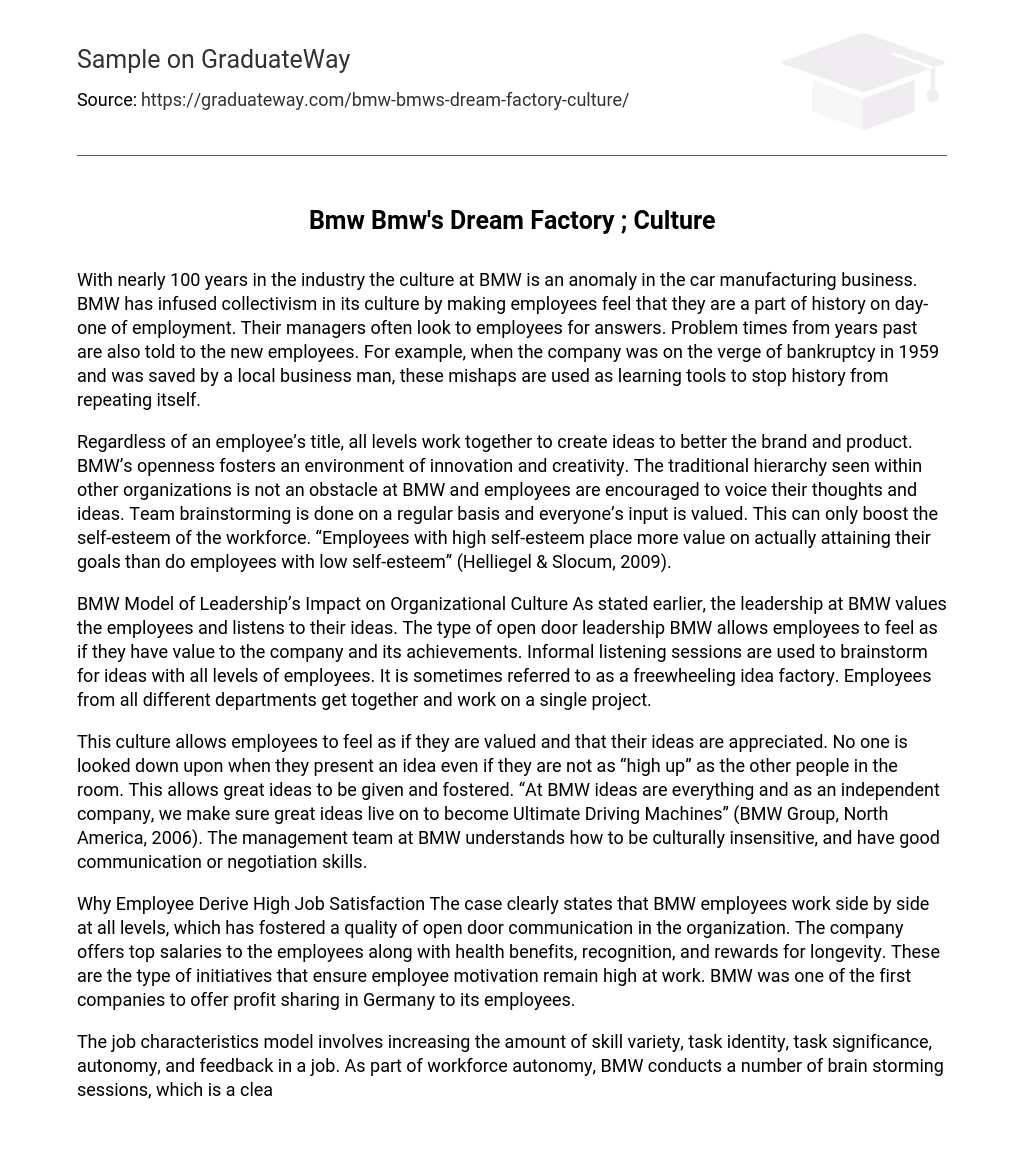BMW, a car manufacturer with nearly a century of industry experience, has developed a distinct culture that distinguishes it from other automotive companies. Right from the start of their employment, BMW aims to cultivate camaraderie among its staff members, ensuring they feel like an essential part of the company’s extensive heritage. Managers at BMW actively encourage their employees to contribute ideas and find solutions, appreciating their knowledge and expertise. Additionally, BMW shares stories of past challenges, such as the crisis in 1959 when bankruptcy was narrowly avoided thanks to the intervention of a local entrepreneur. These anecdotes serve as valuable lessons to prevent history from repeating itself.
BMW promotes a culture of collaboration and idea sharing, where employees of all levels work together to enhance the brand and product. Unlike traditional hierarchies in other organizations, BMW encourages its employees to voice their thoughts and ideas, creating an environment of innovation and creativity. Regular team brainstorming sessions are held, recognizing and valuing everyone’s input. This inclusive approach can effectively boost self-esteem within the workforce. As Helliegel and Slocum (2009) stated, “Employees with high self-esteem place more value on actually attaining their goals than do employees with low self-esteem”.
The BMW Model of Leadership’s influence on organizational culture is centered around valuing and listening to employees’ ideas. This approach, known as open door leadership, makes employees feel appreciated and contributes to the company’s accomplishments. Brainstorming sessions are held informally, involving employees at all levels, creating an environment likened to a freewheeling idea factory. Collaboratively, employees from various departments collaborate on specific projects.
This culture at BMW fosters a sense of value and appreciation for employees and their ideas. There is no hierarchy in idea presentation, so even those who may not hold a high position are not looked down upon. This inclusive environment allows for the development and nurture of great ideas. As stated by BMW Group, North America (2006), “ideas are everything” and the company ensures that great ideas are upheld to become Ultimate Driving Machines. The management team at BMW possesses cultural sensitivity and effective communication and negotiation skills.
The text explains that BMW employees enjoy high job satisfaction due to several factors. Firstly, the company promotes open communication among employees at all levels. Additionally, BMW provides competitive salaries, health benefits, and recognition for long-term employees. These initiatives contribute to maintaining high levels of employee motivation. It is worth mentioning that BMW was among the pioneers in Germany to offer profit sharing to its employees.
The job characteristics model focuses on enhancing skill variety, task identity, task significance, autonomy, and feedback in a job. BMW supports workforce autonomy through brainstorming sessions, where employees demonstrate respect for each other while discussing generated ideas. BMW fosters organizational creativity by promoting increased frequency and higher levels of creative ideas, recognizing that innovation starts with such ideas.
Research has revealed that the environment has a significant influence on both creativity and productivity at BMW. The company’s culture is perfectly tailored to encourage the free flow of creative ideas among its employees. Recognizing the pivotal role the environment can play, BMW has made a conscious effort to foster innovation and adaptability in order to effectively navigate changes within their industry. This approach has established a direct correlation between creativity and crucial organizational outcomes, including productivity and quality.
Creative thinking has improved the quality of solutions for production issues, stimulated profitable innovations, revitalized motivation, enhanced personal skills, and improved team performance. The impact of culture and work environment on performance results is significant at BMW. This includes the processes, tools, and conditions in the workplace that can have a positive or negative effect on employees and the overall company performance.
The work environment at BMW encompasses policies, culture, resources, and working relationships. These factors greatly impact how employees carry out their job duties. Drawing from my experience as a former continuous improvement coordinator, I can confidently assert that BMW can only achieve sustained continuous improvement by fostering a work environment that empowers a high-performing workforce. Therefore, BMW’s leadership must persist in devising strategies to cultivate a work environment that appeals to, nurtures, motivates, and retains exceptional employees.
Conclusion: This paper traced the origin of this company back to its founder Karl Friedrich Rapp nearly 100 years ago and discussed the culture at BMW. It emphasized that one of the foundations of BMW’s culture is a commitment to ensure a work environment with high values and respect for individuality of each employee. Furthermore, it examined BMW’s model of leadership and its impact on the company’s culture, revealing that their management team has created an entrepreneurial work culture that includes treating people with respect.





